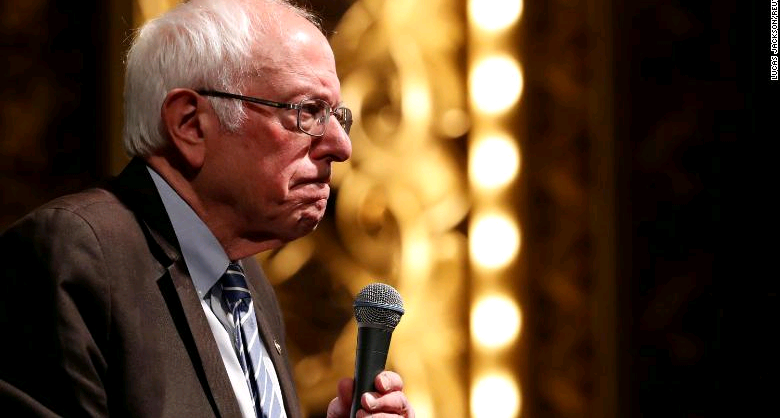< Back
Five reasons Bernie Sanders lost
April 8, 2020Analysis by Harry Enten, CNN

(CNN)Vermont Sen. Bernie Sanders ended his bid for the 2020 Democratic Party's presidential nomination on Wednesday. Not only did he lose a second time in a row, but he actually ended up with less support.
There are many reasons Sanders fell short to Joe Biden. Here are five of them.
1. Lack of black support
Sanders ran into a wall in 2016 among black voters. Hillary Clinton catapulted herself to victory by winning blowouts throughout the South, where black voters make up a huge chunk of primary voters. Sanders needed to improve upon his performance.
Instead, Sanders did as bad in 2020 among this pivotal group. Among African Americans who voted for Biden or Sanders, Sanders won just 23% in the median state with an entrance or exit poll. That was the same percentage he garnered in 2016.
Black voters propelled Biden to his big win in South Carolina, which started him on his journey to defeating Sanders.
2. Lack of establishment support
Sanders was never going to be the darling of the establishment. He's a democratic socalist. Still, he needed the establishment not to be petrified of him winning the nomination.
Unfortunately for Sanders, they were. Sanders got almost the same meager number of endorsements from members of Congress and governors (10) in 2020 as he did in 2016 (9).
The ill effects of the establishment not being fans of him became clear around the South Carolina primary. Biden rode the endorsement of House Democratic Whip Jim Clyburn to a blowout victory. Once Biden became the clear alternative to Sanders, Biden built on that win ahead of Super Tuesday with big endorsements from former South Bend Mayor Pete Buttigieg, Minnesota Sen. Amy Klobuchar and former Rep. Beto O'Rourke -- all former 2020 rivals.
3. No youth turnout surge
Sanders continuously said he would get young people to come out and vote. Sanders, of course, won big majorities among young voters in both 2016 and 2020.
The problem is that there was no upswing in youth turnout relative to other voters. In the median state with an entrance exit poll, those under 45 years old made up 39% of Democratic primary voters in 2016. This year, they were 34%. So if anything, youth turnout may have, in fact, dropped.
Perhaps ironically, in places where turnout was up, Biden won by a lot.
4. White voters without a college degree switch sides
One of Sanders stronger groups in 2016 was white voters without a college degree. If you look on the primary map, you'll see Sanders did very well in 2016 in states like Oklahoma and West Virginia.
It turns out a lot of those voters weren't casting their lot with Sanders as much as they were casting their lot against Clinton, something that was a prelude to her weak general election performance with this group.
Among white voters without a college degree who voted for Biden or Sanders, Sanders took 45% in the median state with an entrance or exit poll. That's down from the 53% he earned in 2016 when he beat Clinton amongst this group.
By doing so well with this group, Biden was able to win the bulk of northern states on Super Tuesday and build on his wave of momentum.
5. Fewer caucuses in 2020
The Democratic National Committee put forth a bunch of recommendations (approved by Sanders allies) after 2016, including encouraging more primaries and fewer caucuses. That most certainly hurt Sanders.
Clinton lost the vast majority of caucuses in 2016 and often by wide margins, even as she easily won the nomination. This year, Biden hasn't won a single caucus contest so far. You may recall, for example, that Sanders won the popular vote in Iowa and Nevada, as Biden struggled in both states.
The problem for Sanders is the percentage of delegates determined by caucuses dropped from 14% in 2016 to 3% in 2020.
States that moved from caucuses to primary like Idaho, Maine, Minnesota and Washington that Sanders crushed in 2016 became Biden wins in 2020.
https://www.cnn.com/

